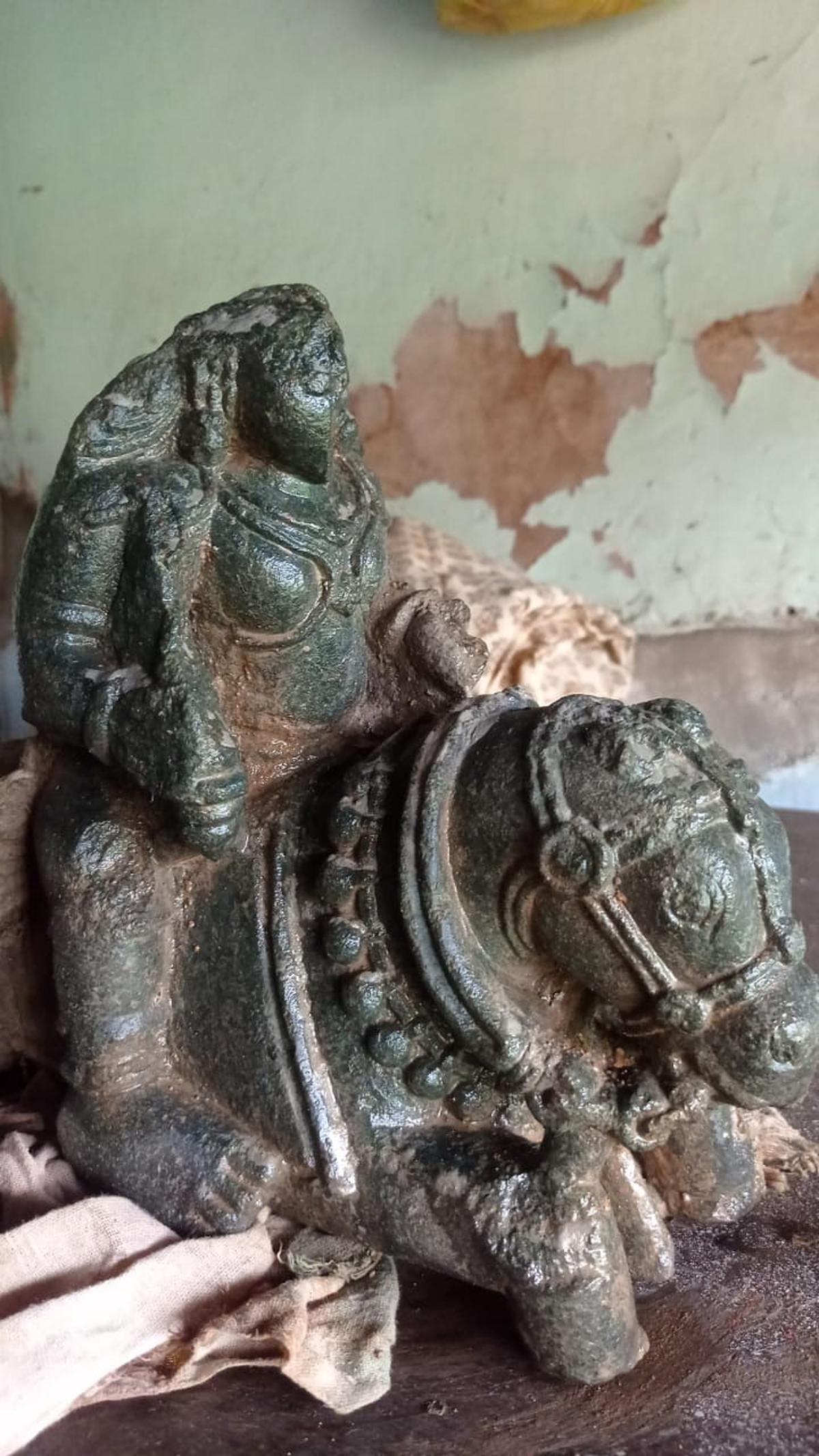Description

Disclaimer: Copyright infringement not intended.
Context
- The recent discovery of two ancient sculptures in Basrur, near Kundapura, Udupi district, has provided significant evidence for the existence of the ancient Mylara cult in the coastal region.
- These sculptures, believed to date back to the 15th and 17th centuries A.D., shed light on the historical significance of the Mylara cult and its presence in the area.
Details
The Discoveries
Mutilated Royal Hero Sculpture
- Found in a well at Basrur, this sculpture depicts a royal hero seated on a horse, holding a sword and a bowl in his right and left hands respectively.
- The uniqueness of this sculpture lies in the sitting posture of the horse and the absence of Mylaladevi on the horse's back.
- It is believed to belong to the 15th century A.D. and was brought to the attention of historian T. Murugeshi by Pradeep Basrur.
Mylara and Mylaladevi Sculpture
- Another sculpture, in the form of a tiny stone tablet, was discovered in a water body or tank.
- This sculpture portrays Mylara and Mylaladevi sitting on an ornate horse, each holding swords in their right hands.
- The sculpture, showcasing side profiles of the figures, is associated with the 17th century A.D. and was found during dredging activities in a tank owned by Devananda Shetty of Halnad.

Historical and Cultural Significance
Proof of Mylara Cult Existence
- The discovery of these sculptures adds weight to the historical existence of the Mylara cult in the coastal region.
- The representation of Mylara and Mylaladevi in these sculptures indicates the popularity and reverence for this cult during the respective time periods.
Basrur's Historical Importance
- Basrur, identified as a historical trading city of the Medieval period, played host to various trading guilds such as Uhayadesi and Nanadesi.
- These guilds actively engaged in trade, making Basrur a center for diverse cults, including the Mylara cult.
The Mylara Cult
- The Mylara cult, also known as the Milara cult, is a significant religious and cultural movement in Karnataka, India, rooted in the worship of the deity Mylaralinga or Milaralinga.
- This syncretic cult combines elements of Hinduism and local folk traditions, holding deep spiritual and cultural importance for its followers.
Historical Evolution
- The origins of the Mylara cult can be traced back to the 12th century CE, associated with the revered Lingayat saint and philosopher Siddharama, also known as Siddharameshwara or Siddhalinga.
- His teachings emphasized devotion to Lord Shiva and social equality, which laid the foundation for the Mylara cult's principles.
Core Beliefs and Practices
- Central Deity: Mylaralinga is the central deity of the Mylara cult, often depicted as a unique fusion of a linga (symbolizing Lord Shiva) with a human face. This representation signifies the union of the formless divine and human experience.
- Worship Rituals: Devotees gather in Mylara temples to offer milk and other offerings to the deity. Rituals involve pouring milk over the linga and reciting hymns and devotional songs. The cult emphasizes personal experience and devotion.
Cultural and Social Significance
- Unity and Equality: The teachings of Siddharama advocate social equality and unity among followers, transcending caste-based distinctions. The cult fosters a sense of inclusivity and harmony.
- Cultural Legacy: The Mylara cult contributes to Karnataka's cultural heritage through its music, poetry, and folklore. It has inspired various art forms, enriching the region's cultural tapestry.
Festivals and Gatherings
- Mylaralinga Jayanti: The birth anniversary of Siddharama and the embodiment of Mylaralinga is celebrated as Mylaralinga Jayanti. Festivities include processions, cultural performances, and religious discourses.
Contemporary Relevance
- Spiritual and Cultural Resonance: The Mylara cult continues to attract followers who value its spiritual teachings and cultural legacy. Its emphasis on social equality and the fusion of Hindu and folk traditions maintains its relevance.
- Religious Centers: Mylara temples and shrines across Karnataka serve as spiritual and cultural hubs, providing devotees with a space for worship and cultural expression.

Conclusion
The recent discovery of ancient sculptures in Basrur unveils the presence of the Mylara cult in the coastal region of Karnataka. These sculptures not only provide insights into the historical timeline of the cult but also highlight the cultural and religious significance it held for the people of that era. As tangible artifacts of the past, these sculptures contribute to the understanding of the rich heritage and diverse traditions that shaped the region's history.
|
PRACTICE QUESTION
Q. Explain the cultural and historical significance of the Mylara cult in the coastal region of South India. How did this cult influence the socio-religious practices and local traditions? (250 Words)
|
https://www.thehindu.com/news/cities/Mangalore/discovery-of-two-ancient-sculptures-at-basrur-proves-existence-of-ancient-mylara-cult-in-coastal-region-says-historian/article67219901.ece















